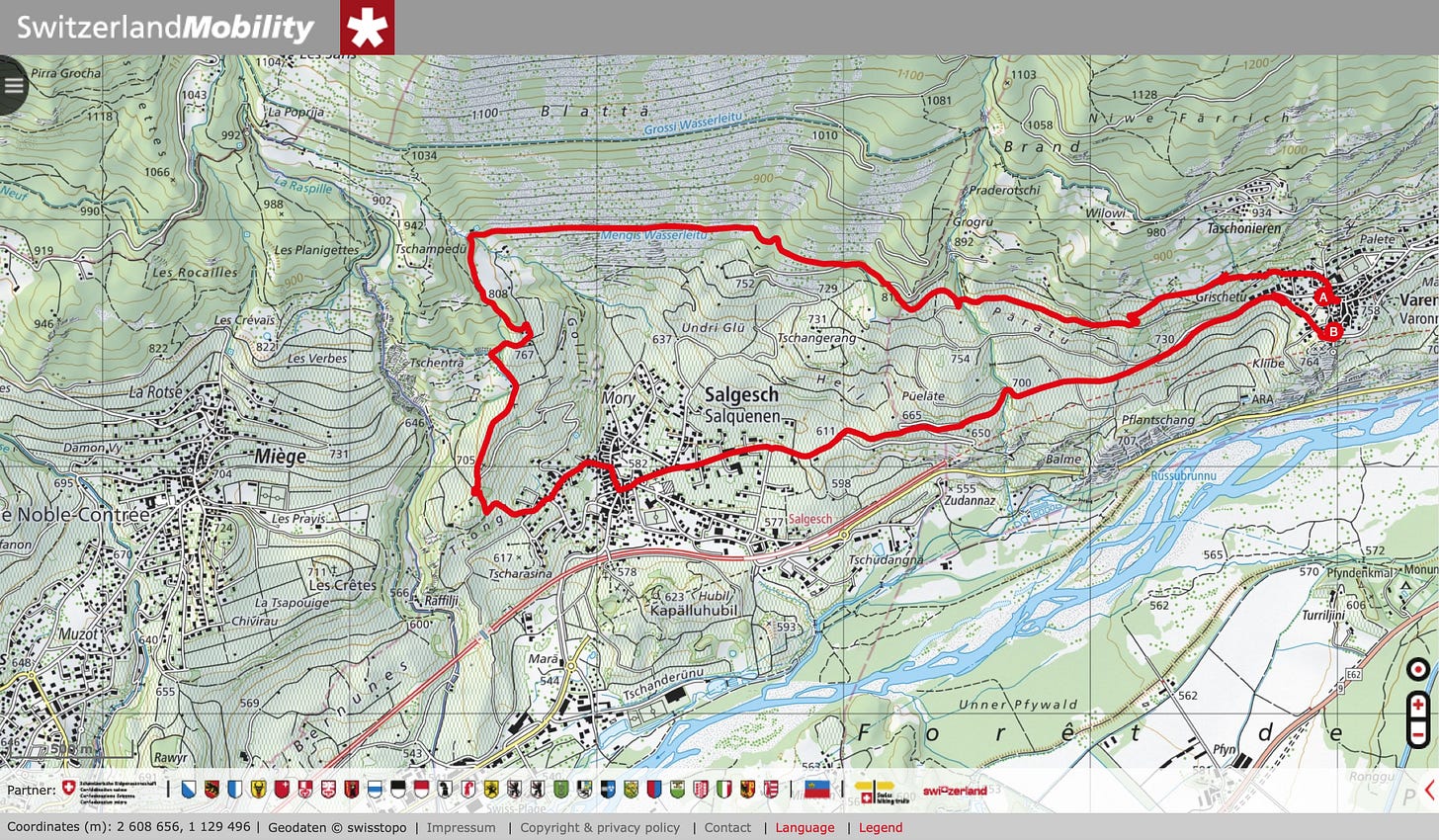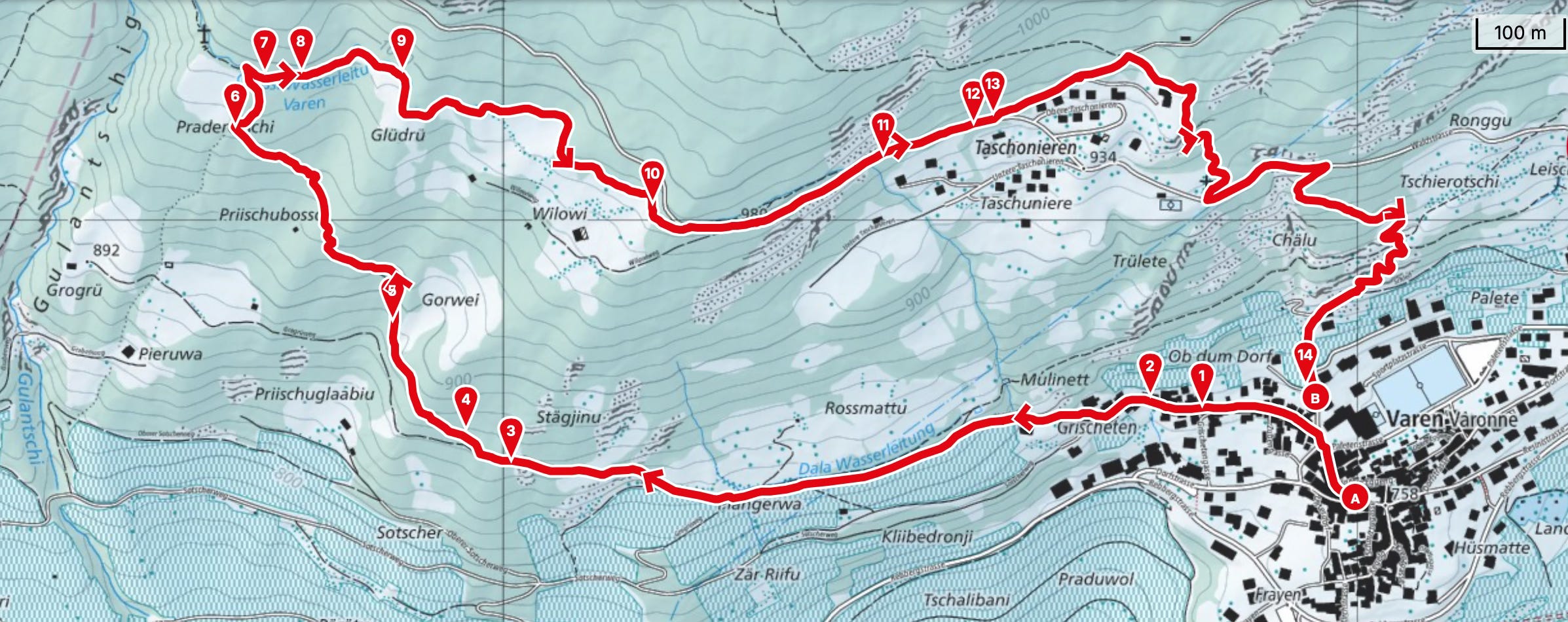Wine hiking: Varen bisse, Valais
4.6 km, easy but with a steep 279m climb, year-round unless snow
This is a 4.2 km loop from the centre of Varen up to the Grossi Wasserleitu/Varen bisse, then east and back down to the village. It’s a perfect early spring hike to help you get back in shape. (Skip the Longer option text to get to details for this hike.)
Longer option
If you want a longer hike, continue west to Salgesch/Salquenen, one of the more famous Valais wine villages, which is also home to part of the Valais Vine and Wine Museum. From there you can return via a marked trail that runs parallel to the Rhone, on the banks high above it. Distance 9.8 km, ascent 333 m, descent 339 m. Count on 2h45. I’ve done all parts of this, but not the loop as I’ve drawn it here.
Salgesch has more than 20 wineries, including several that are among the best in Switzerland: Olivier Mounir at Cave du Rhodan (a personal favourite), Diego Mathier whose five red-headed daughters are now part of the Swiss Winery of the Year Nouveau Salquenen winery, Albert Mathier & Sons, a pioneer in making orange wines whose amphorium cellar visits (groups) offer a great way to learn and taste wine. There is also the very classy (and beautiful wines) Domaines Chevalier, where you should ask about the Sherpa wines, but don’t miss vine parcel selections by owner Patrick Z'Brun and talented oenologist Christian Gfeller, as well as newer blends by the latter, who is a huge fan of Burgundy-style wines.
Notes, both hikes
Three seasons: avoid this if there is snow on the ground at bisse altitude: 980 m here for the Grossi Wasserleitu/Varen. I originally did this hike 24 June 2023, but I walked part of it earlier in March 2025 to make sure the trail is suitable. Unless we have more snow (always check!), this should be a good walk from now until December or when new snow arrives.
The ascent is steep and mostly at the beginning. Just when you hear the soft burble of the bisse water, the walk becomes easier. If you’re heading to Salgesch, go left when you reach the bisse.
Coming by car: in early April 2025 bthe Sierre-est A9 exit sees the start of two years of major construction work with detours, as part of the extension of the autoroute to Brig. Allow extra time.
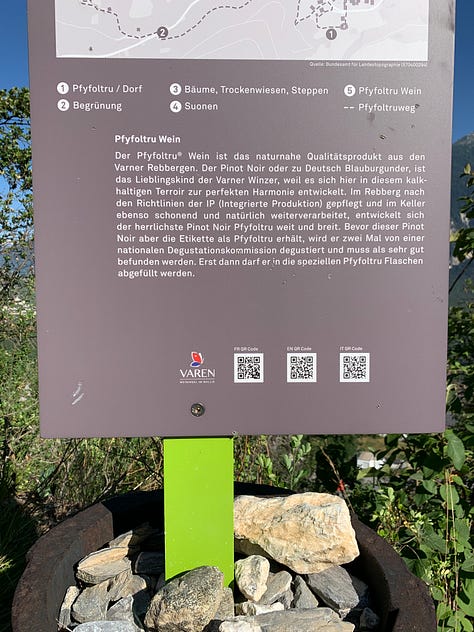
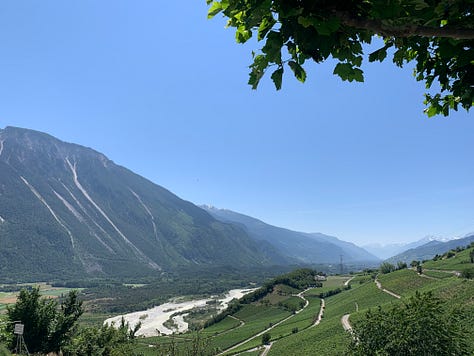

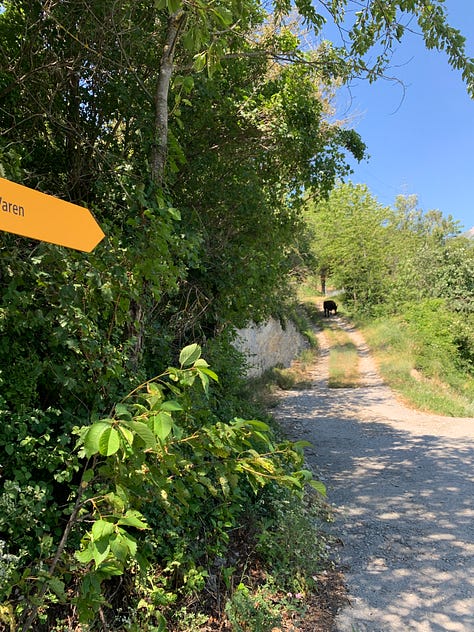
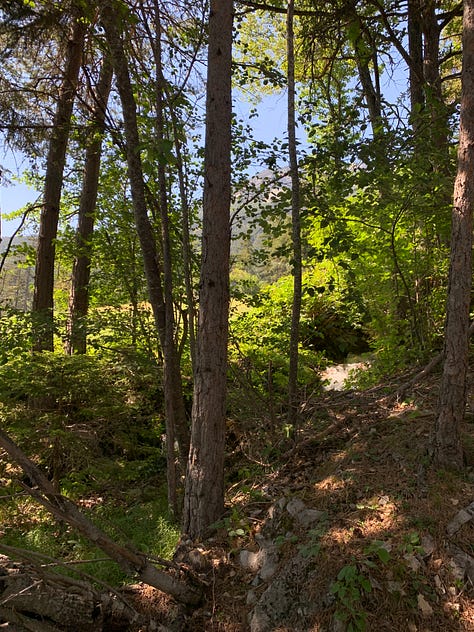
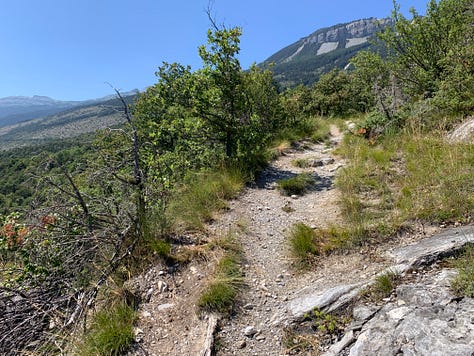
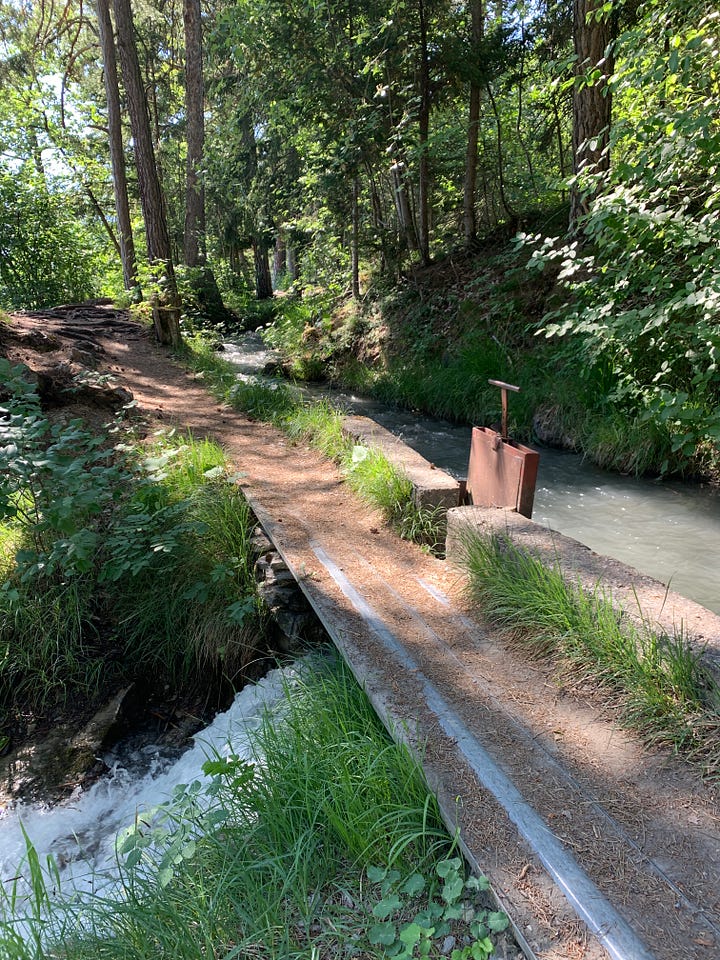
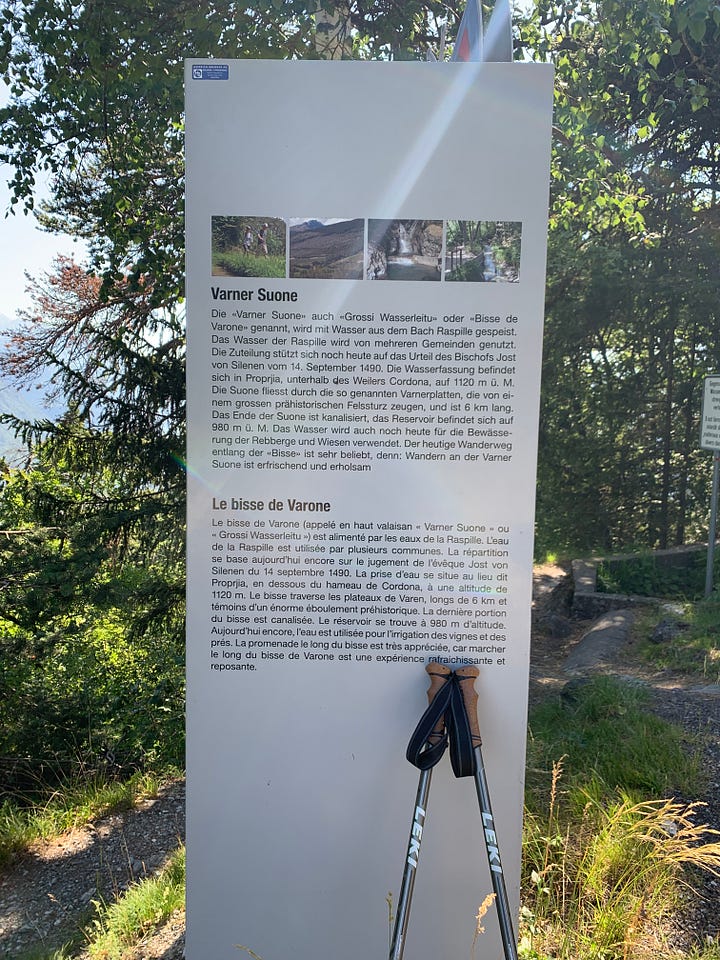
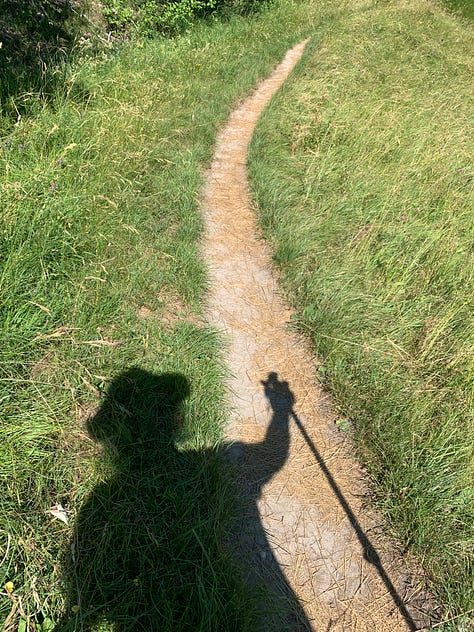

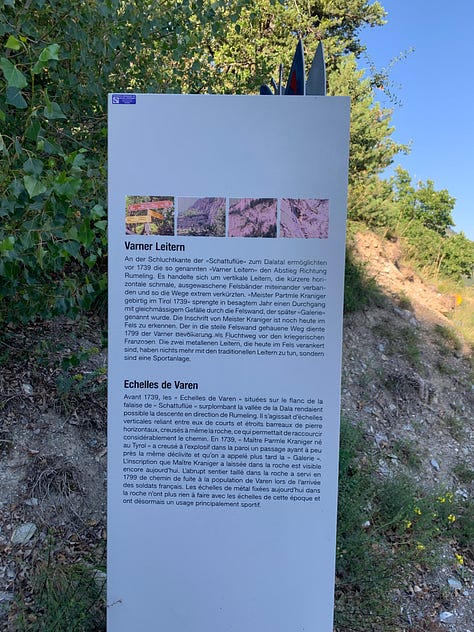
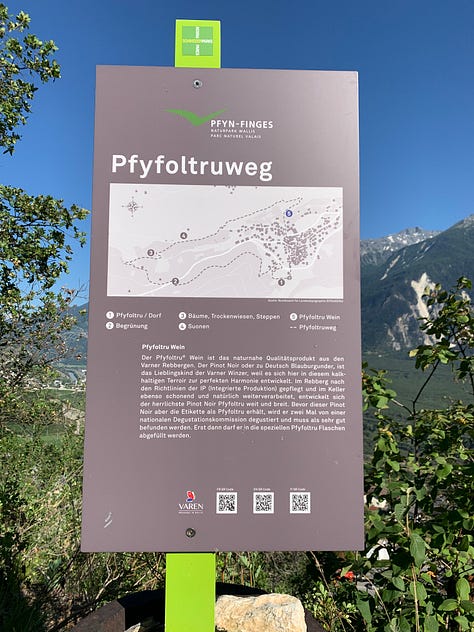
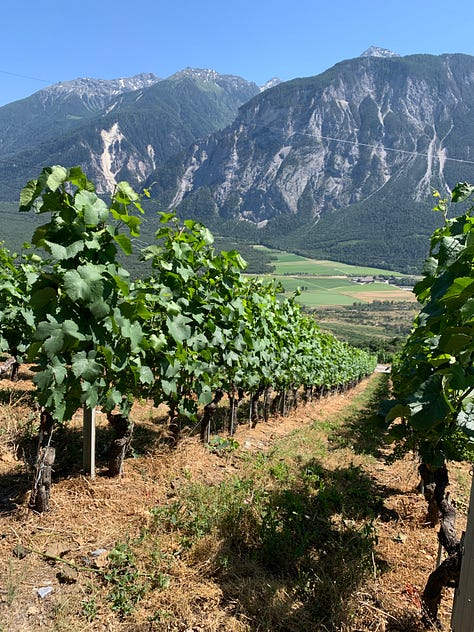
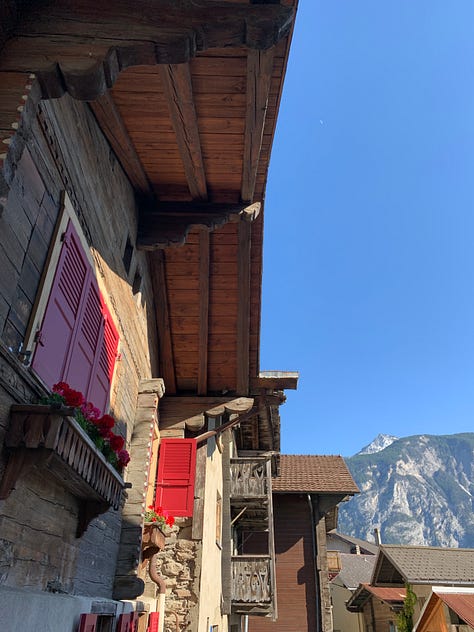
Varen loop, the hike
The village of 620 people has 130 hectares of vines, perched above the Rhone river. The bisse is another 300 metres altitude above the village, which is rich in vineyard paths and hiking and mountain bike trails. Soon after you leave the high end of the village, which has plenty of charming old chalets, you begin a steep climb on a narrow path, with vines to your left. These are the Pfyfoltru vineyards: it’s an old local patois word for butterfly, and is used to underscore that wines from here are made by working closely with nature. The village is known particularly for Pinot Noirs.
The first part of the hike is pastoral, with vineyards, woodland forests and then scraggy open hillside. You enter the woods to climb again, up to the bisse, where you rejoin the regional number 36 hike, “Chemin du vignoble, Martigny-Leuk, and walking is easier along a groomed trail. The area is rich in history; markers along the way recount archeological finds from the bronze and iron age, nearly complete ceramics—and riveting tales of ladder escapes (the kind you pull up to slow down the enemy). As you leave the bisse to return to the village you follow a local road for a short while and then expect a steep but short descent for the end of the hike. My apologies that some of the photos above do not exactly match their locations on the map; Switzerland Mobility has a beta application and I had a few problems annotating the map.
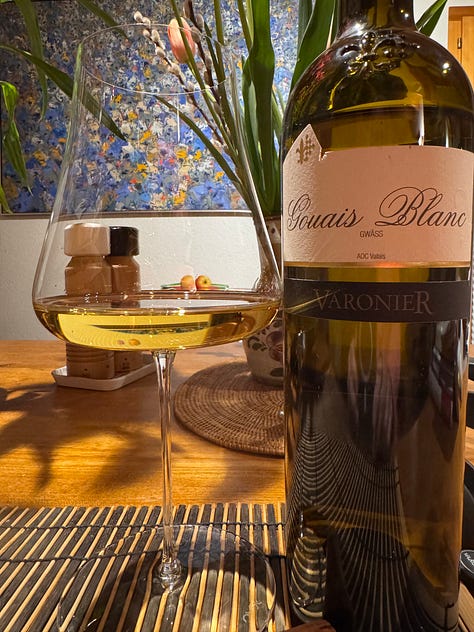
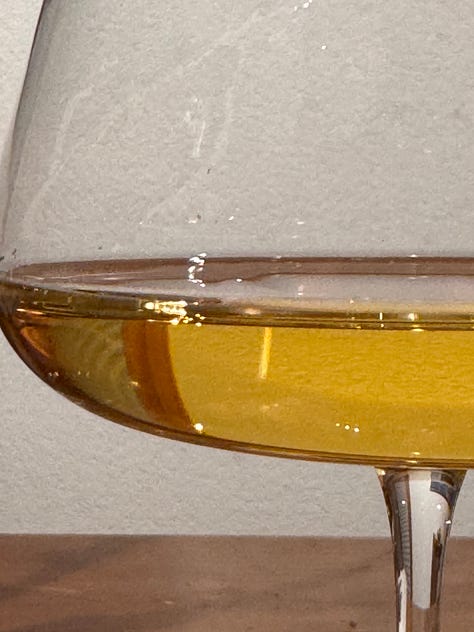
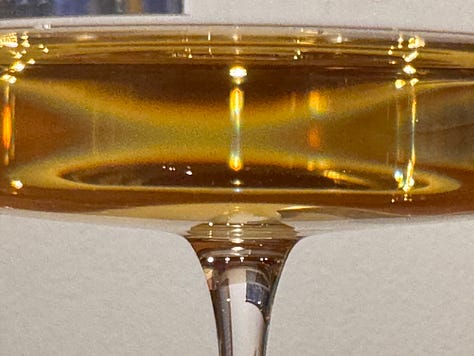
The wine
This is a village with no shortage of wineries, many quite small. Varonier is larger than most, somewhat more commercial, yet it remains very much a small and dynamic family business. The cellar has a good collection of well-made wines, of which one of the most exciting is the very rare Gouais blanc/Gwäss, once so widely grown that it has some 80 known offshoot grapes in Europe—thus it is sometimes called the Don Juan of grapes. Chardonnay and Gamay are two of its better-known offspring. At the start of the 16th century it was one of just five white grapes recorded in Valais (two Muscats, Gouais blanc, Rèze and Lafnetscha) and it was one of the most widely grown white grapes in eastern France.
What it’s like: Very dry, very acidic, startling and for those who like acidic wines, a great pleasure to drink. It’s described as rustic, accurate in the sense that it is not complex but it has good character. It fell in popularity as more varied and complex grapes arrived, but this is a great opportunity to be reminded how the world of wine has always evolved and is still evolving. I would pair it with anything that will take an acidic white wine, which is a great many foods, starting with fish and alpine hard cheeses. About Ellen World hikes
The landscape of Swiss wine
Wine Hiking Switzlerland
This hike is an extension of my 2022 print book Wine Hiking Switzerland, a Swiss bestseller available in three language versions, sold by most Swiss bookstores. Each hike here on Ellen’s World has an online map, photos, a brief description and suggestions for 1-3 wineries nearby, normally with one recommended wine, to respect the format of the book. The book was produced with editorial help; this online version of hikes is my own work.




